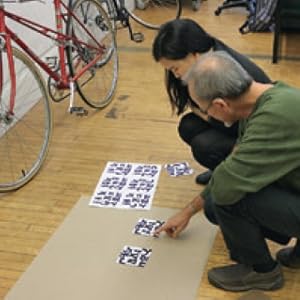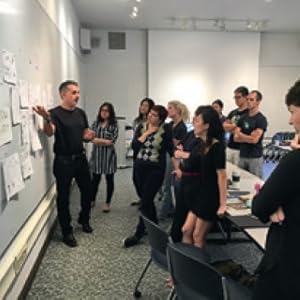Price: $35.00 - $21.15
(as of Feb 03, 2025 17:13:36 UTC – Details)

This expanded and revised version of the best-selling Universal Methods of Design is a comprehensive reference that provides a thorough and critical presentation of 125 research methods, synthesis/analysis techniques, and research deliverables for human-centered design.
The text and accompanying photos and graphics of this classic resource are delivered in a concise and accessible format perfect for designers, educators, and students. This new, expanded edition includes updated information on scenarios, secondary research, territory maps, and other chapters. The addition of 25 new chapters brings fresh relevance to the text with innovative design methods that have emerged since the first edition, such as backcasting, behavioral design, horizon scanning, and transition design.
Universal Methods of Design, Expanded and Revised distills each method down to its essence, in a format that helps design teams select and implement the most credible research methods suited to their design culture. Each method is presented in a two-page format. The left-hand page contains a concise description of the method, accompanied by references to further reading. On the right-hand page, images and case studies for each method are presented visually. The relevant phases for design application are highlighted as numbered icons along the right side of the page, from phases 1 (planning, scoping, and definition) through 5 (launch and monitor).
Build more meaningful products with these methods and more: Affinity Diagramming, Behavioral Mapping, Bodystorming, Contextual Design, Critical Incident Design, Directed Storytelling, Empathy Maps, Graffiti Walls, Image Boards, Parallel Prototyping, Simulation Exercises, Touchstone Tours, and Weighted Matrix.
This essential guide:
Dismantles the myth that user research methods are complicated, expensive, and time-consumingCreates a shared meaning for cross-disciplinary teamsIllustrates methods with compelling visualizations and case studiesCharacterizes each method at a glanceIndicates when methods are best employed to help prioritize appropriate design research strategies
Universal Methods of Design, Expanded and Revised is an essential resource for designers of all levels and specializations.
From the Publisher


Universal Methods of Design Expanded and Revised
In keeping with the work that we do, we have a simple, human-centered design intention in the presentation of this book.
Methods and approaches are organized alphabetically for ongoing, quick reference. On each page spread, accessible, concise text descriptions of each method appear on the left page, accompanied by references for further reading that pay respect to the seminal works of those who have laid the foundations for us.
An infographic on the bottom left of each page characterizes the methods and techniques using several useful research facets. The behavioral/attitudinal facet suggests the type of content most appropriately targeted by the method. Quantitative/qualitative characterizes the form in which that content is typically collected and communicated. Innovative/adapted/traditional describes whether the method is original to design, adapted from other disciplines, or used traditionally across disciplines. Exploratory/generative/evaluative frames the methods by their primary purpose of early exploration, concept generation, or testing and evaluation.
And finally, participatory/observational/self reporting/expert review/design process describes the typical roles of the researcher and participant, with design process characterizing an overall approach to design.
The relevant phases for design application are highlighted as numbered icons along the right side of the page: Phase 1 is Planning, Scoping, and Definition Phase 2, Exploration, Synthesis, and Design Implications Phase 3 is Concept Generation and Early Prototype Iteration Phase 4 is Evaluation, Refinement, and Production Phase 5 is Launch and Monitor
SYNTHESIS / ANALYSIS TECHNIQUE — Critiques
A central mechanism to advance the design process, inviting constructive feedback on concepts from teachers, clients, stakeholders, or peers.
The critique or “crit” is a crucial element of the design process in both education and practice. Students and design practitioners, alike, benefit from timely and constructive input, advancing their creative work through the reactions and comments of others. The open critique of shared work is a unique feature of design and related creative fields (e.g., architecture2), in contrast to many professions where solutions are worked on and delivered in less public forums. There are various forms and purposes of critique, but in essence they are intended to improve the design, while also improving the presentation of the design, learning how others would understand the design, and learning to critique design.
In the Critical Response Process, Liz Lerman outlines a series of steps with specified roles of the artist or designer, responders, and a facilitator.4 When the work is presented, steps are as follows:
Statements of Meaning Responders indicate what they found meaningful, interesting, or remarkable about the work.Designer Questions The designer asks questions of the responders. Responders may provide opinions only in direct response to questions and without suggestions for change.Neutral Questions Responders ask neutral questions of the designer; for example, rather than “Why did you choose red?” they would ask, “What informed your choice of colors?”Permissioned Opinions Responders state, “I have an opinion about _______. Would you like to hear it?” The designer has the option of saying yes or no.
In an unusual and rare form, ritual dissent attempts to depersonalize the critique of work. A resilient spokesperson is nominated to present a design idea to a silent panel of critics. Then, with the spokesperson’s back turned to the panel, they vigorously attack the design idea (dissent) or provide better alternatives (assent). Returning to face the panel, the spokesperson then describes what they learned. In some instances, ritual dissent is conducted in multiple rounds, with the spokespersons rotating between tables of critics.
Aside from structured methods for critique, a general set of rules or guidelines to maintain a positive, constructive atmosphere is key. For example, a critique is more likely to be productive by staying focused on the work, not the person; by asking questions in a respectful manner; by thanking people for their feedback; and by mentally placing comments in “buckets” of accept, reject, or reflect.
Various forms of critique include the desk critique or expert review, typically one-on-one between an instructor and student or supervisor and designer:






Publisher : Rockport Publishers; Revised edition (December 3, 2019)
Language : English
Flexibound : 264 pages
ISBN-10 : 1631597485
ISBN-13 : 978-1631597480
Item Weight : 2.22 pounds
Dimensions : 8.8 x 0.85 x 10.25 inches
Customers say
Customers find the book useful and easy to use. They appreciate the clear descriptions of research methods and their reasons for use. The book provides a good overview of each activity, making it a valuable reference for creative professionals.
AI-generated from the text of customer reviews


